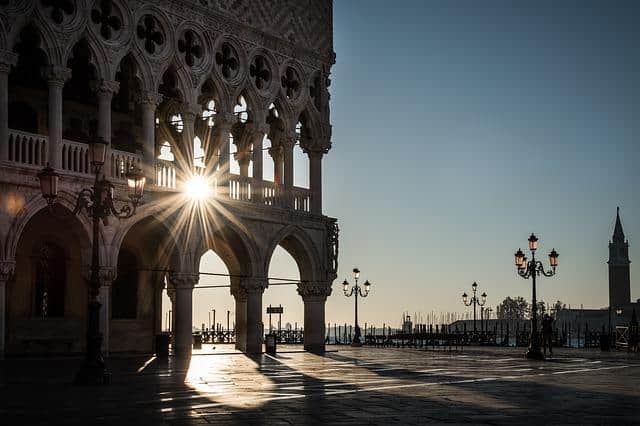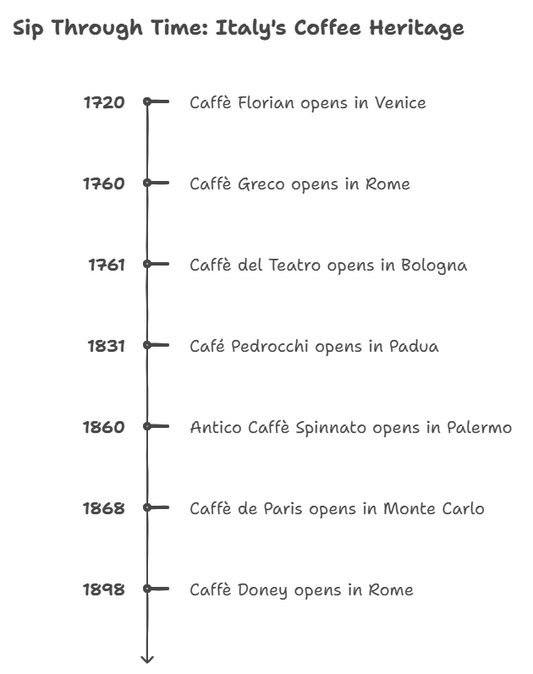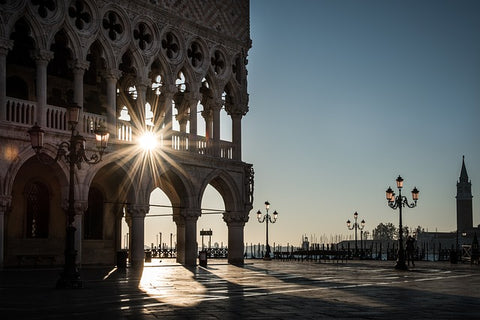
- It is a masterpiece of Gothic architecture. Gothic architecture is a style of architecture that was popular in Europe during the High and Late Middle Ages. It involved the use of materials that allowed the weight of the roof to be counterbalanced by buttresses that are located outside the building, doing this gives greater height and space for windows. It also utilizes stained glass and the rose window in order to bring about light, color, and beauty to the interior part of the house. The architectural exuberance of the palace is the first thing that meets the eyes of an onlooker. The building is purely gothic; however, there is a huge influence of Venetian art; thus, making it Venetian Gothic style.
- The height of Doge's Palace? It is unknown as it has been burnt down many times. Based on estimate, it would be at least 12m tall at its peak.
- The main entrance to the palace is called the Porta della Carta and this is the link between St. Mark’s Basilica and Doge’s Palace. The entrance was created in the mid-1400s by two brothers called Bartolomeo and Giovanni Bon.
-
There are many buildings that have attempted to replicate the architecture of Doge’s Palace, especially in the UK. Examples of these include the Wedgwood Institute in Burslem, Templeton’s Carpet Factory in Glasgow, the Wool Exchange in Bradford, and the Scottish National Portrait Gallery in Edinburgh.
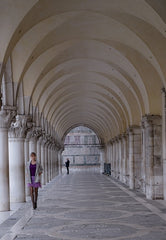
- The interior of the palace boasts stunning artwork on the ceiling and the walls are made of stucco. There are also portraits of all of Venice’s doges with the exception of one doge who disgraced himself while attempting to overthrow the government.
- The Doge’s Palace was the center of the Venetian Republic. Almost from the birth of Venice, an elected Doge or president ruled over the city and made his home overlooking the Venetian lagoon. Originally the palace started out as a fortress surrounded by canals, but as the Venetian Republic grew, it was rebuilt to become the first and finest building visitors saw as they arrived from the sea.
- The Doge’s Palace was basically similar to the White House. It was the seat of the Venetian government and the place where new Doges were elected for life. The most important decisions about Venice’s laws, rulers, trade, and empire were taken in the Doge’s Palace. And few were allowed entry to the heart of the government unless they were a member of one of Venice’s noble families or a civil servant. Fortunately today, Venice’s secret corridors of power are open to small groups of visitors, but it's essential to book in advance to gain entry to this most private and fascinating world.
- Doge’s Palace has been part of the Venetian museums' network since 1997. The Fondazione Musei Civici di Venezia has managed this since 2008.
- The palace is the property of the Italian State and in 1923 they entrusted the management of the building to the Venetian municipality so it could be run as a museum.
- The wing overlooking the lagoon is the oldest part of the palace. The corners of this are decorated with sculptures from the 14th-century. It is believed that these sculptures are the work of several artists, including Filippo Calendario, Antonio Bregno, and Matteo Raverti.
- Numerous fires and ground failures have occurred in the lifespan of the building that led to its reconstruction and renovation several times in 10thcentury, 1340, 1424, 1438, 1547, and 1577. Apart from this, the respective decay of the structure in the 19th century had made a good case for the overall renovation to be done.
- The grand council chamber (Higher Council Hall or Sala del Maggior Consiglio) which was also rebuilt after the 1577 fire can house up to 1,800 members of the rich aristocracy and show the power of Venice Republic at its height.
- Guariento created the fresco that decorated the Chamber of the Great Council within the Palace. The work of other artists has been added at a later date.
- Per Denontie Segrete served as a warning place. Literally meaning For Secret Denunciations, the Per Denontie Segrete are the masks where names and the respective warnings to the respective individuals were slipped into the mouths of the masks. If anyone was denounced, the death sentence was imminent, so an individual had to be wary of his actions.
- St Mark’s Basilica was once the Doge’s private chapel. If you think the palace is ornate, however, wait till you see his private chapel – the stunning golden St Mark’s Basilica. These days the beautiful basilica is the city’s cathedral, but it was originally built as the Doge’s personal sanctuary and to house the bones of the apostle Mark the Evangelist that Venetians stole from Egypt’s ancient city of Alexandria in 828 AD. Nicknamed the “Chiesa d’Oro,” or church of gold, the Byzantine style basilica is covered in glittering Murano glass mosaics, both inside and out. The floor is a colorful kaleidoscope of marble geometric patterns reminiscent of Arabic mosques. It is a breathtaking symbol of Venice’s links with the East, its enormous trading wealth and its audacity.
- There’s a secret place in the palace where convicts were tortured. Many tourists are not allowed through the small door beyond the ornate staircase because there lies a place devoid of all the ostentation, a place where the accused were tortured and life sentences were acted upon. Doge’s Palace has also a connection with the Bridge of Sighs which can be found at the back of its structure.
- Womanizer Giacomo Casanova was once a resident of the Doge’s Palace. From the grace of the basilica, we turn finally to the disgrace of Venice’s most notorious son, womanizer Giacomo Casanova. Regardless of what he later claimed, Casanova wasn’t a nobleman and didn’t work for the state, so why was he a resident of the Doge’s Palace for a year in 1755? It’s simple. Casanova was a prisoner in the Doge’s Palace jail. You might think that the sassy, 30-year old had been convicted for adultery, but actually, it was his fascination with illegal witchcraft, magic and the occult that was his undoing. He was arrested after an anonymous tip-off, tried and condemned to five years in detention at the Doge’s pleasure. What happened next would surprise everyone, since the young man spent just one short year in his wood-paneled cell before hacking his way out over the roof and escaping via gondola to exile in Paris. Casanova himself later turned his audacious escape into a best-selling book and today you can walk in his footsteps, treading the very boards of the attic prison cell that proved no match for the legendary Venetian. The dungeon tour might be boring to some as it is just a stretch of prison cells but it is unexpected for some guests not knowing the history.
- The north side of the courtyard is closed by the junction between the palace and St. Mark’s Basilica, which used to be the Doge’s chapel. At the center of the courtyard stand two well-heads which were from the mid-16th century.
- The facades include a lower section consisting of a ground floor colonnade beneath an open loggia. Unlike many other medieval era palaces, here at the Palazzo Ducale, the loggias are below while the solid walls are above.
- Doge’s Palace houses the largest oil painting in the world. The Doge’s Palace is packed with wonderful artworks, but none rival the scale and grandeur of the painting that hangs in the Hall of the Great Council; Tintoretto’s heavenly masterpiece, Paradise. No room in the Doge’s Palace was bigger or more important than this one. When the council was in session, the hall had to accommodate all the 1,800 noble citizens entitled to vote. And all decisions made by the Republic were discussed here so when the hall required redecorating after a fire, a contest was held to appoint an artist of suitable stature. Measuring an enormous 22 by 9 meters (74 by 30 feet), Tintoretto’s oil painting is the largest in the world; a spectacular sight filling the entire wall behind the Doge’s throne with a seething mass of around 500 saintly figures ascending to heaven.
- The Doge’s Palace was recreated and is playable in the 2009 video game, Assassin’s Creed II.
Related Questions
How Casanova escape the Doge's Palace? Casanova reached to escape from the rooftop of the prison (Piompo prison) thank a hole made from a friend (Marino Balbi) and from there he moved to the rooftop of Ducale Palace, he got into a window and from different stairs, he went down to the reception. Without being seen by anyone he got outside and he took a Gondola (typical boat) and escape from the city center.
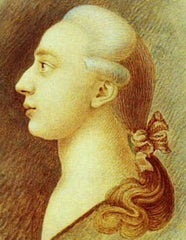 Was Giacamo Casanova good-looking? Absolutely not, see this photo from Wikipedia. However, he was charming, witty and strove to be the best ideal escort.
Was Giacamo Casanova good-looking? Absolutely not, see this photo from Wikipedia. However, he was charming, witty and strove to be the best ideal escort.
Any reasons not to go to Doge's Palace? Doge's Palace is definitely a must-go place in Venice, but being a tourist spot, it is a tourist trap with pricey food and gelato located around it at St Mark's Square. Violent crime is low but do be careful with your wallet especially in a crowd. Do consider other places like Burano island if you have more time.
